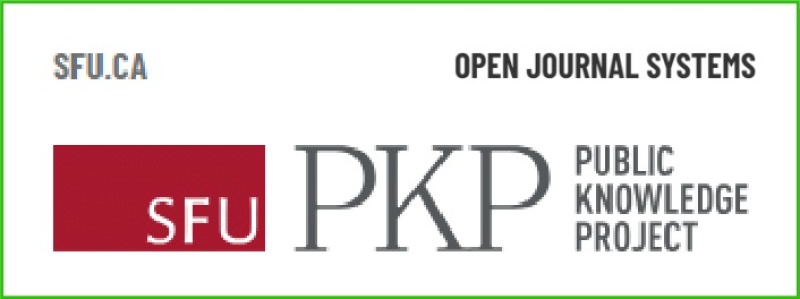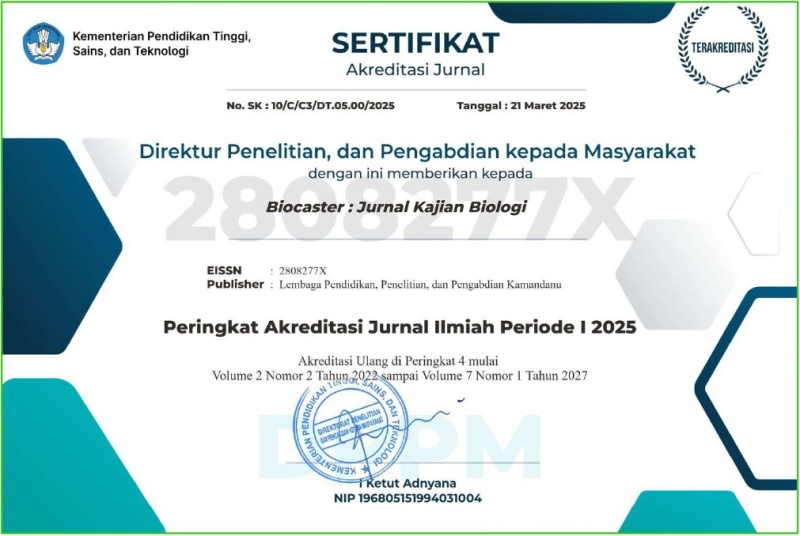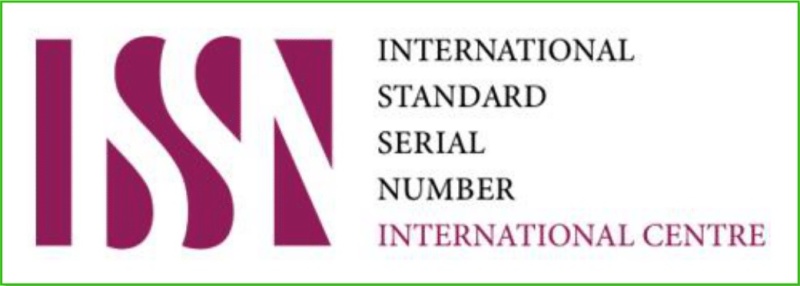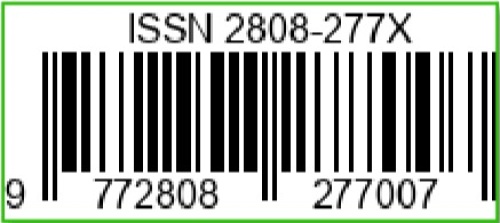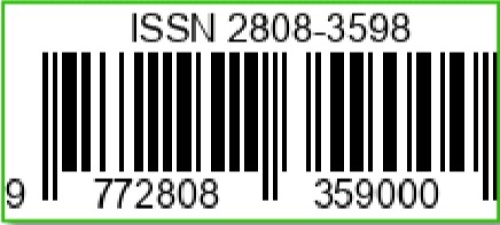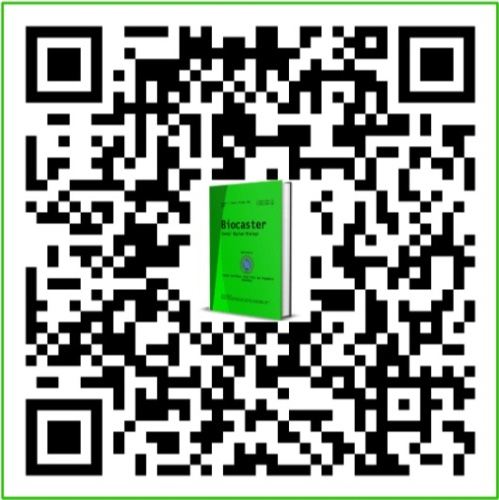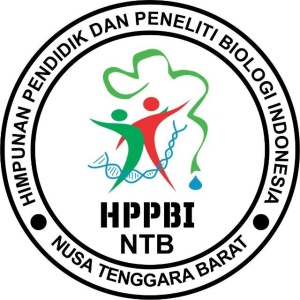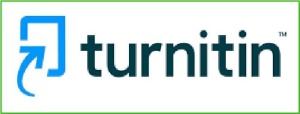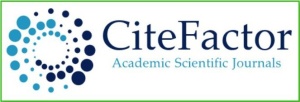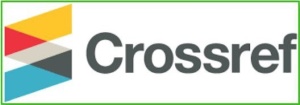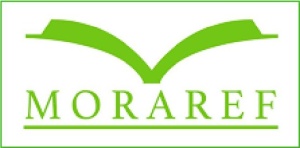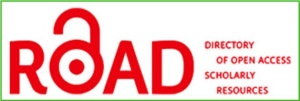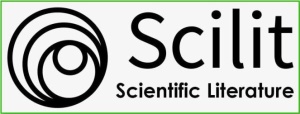Pengaruh Pemberian Pupuk Organik pada Media Tanah yang Mengandung Timbal (Pb) terhadap Pertumbuhan Apu-apu (Pistia stratiotes)
DOI:
https://doi.org/10.36312/bjkb.v1i1.22Keywords:
Apu-apu (Pistia stratiotes), Organic Fertilizer, Lead (Pb).Abstract
Apu-apu (Pistia stratiotes) is a hyperaccumulator plant for lead (Pb), whereas apu-apu is widely consumed by the public. This study aimed to determine the growth and lead content (Pb) of Apu-Apu at various doses of organic fertilizer; and to determine the most effective dose of organic fertilizer to increase growth and reduce lead (Pb) content in Apu-apu. The study was conducted in a completely randomized design (CRD) with treatment with organic fertilizer at a dose of 0 grams, 50 grams, 100 grams, 150 grams, 200 grams, and 250 grams in 2 kg of soil from Ambon TPA. Each treatment was repeated 4 times and carried out for 4 weeks. Observations included plant height, number of leaves, leaf length, root length, and plant wet weight. At week 4, measurements of lead (Pb) levels in the leaves were carried out. ANOVA and 5% BNT were tested. The results showed that the application of organic fertilizer can increase the growth of Apu-apu plants. The most effective dose for Apu-apu plant growth is 200 grams in 2 kg of soil. The application of organic fertilizer could not reduce the Pb content in the Apu-apu plant.
Downloads
References
Ambarwati, E. (2004). Budidaya Tanaman Sayuran. Yogyakarta: UGM Press.
Darmono. (2006). Lingkungan Hidup dan Pencemaran : Hubungannya dengan Toksikologi Senyawa Logam. Jakarta: UI Press.
Eddy, S. (2010). Kemampuan Enceng Gondok sebagai Agen Fitoremediasi Air Tercemar Timbal (Pb). SAINMATIKA: Jurnal Ilmiah Matematika dan Ilmu Pengetahuan Alam, 6(2), 1-7. https://doi.org/10.31851/sainmatika.v6i2.3
Ganefati, S. P., Susanto, J. P., & Suwarni, A. (2008). Pengolahan Leachate Tercemar Pb sebagai Upaya Pencegahan Pencemaran Lingkungan TPA. Jurnal Teknologi Lingkungan, 9(1), 92-97. 10.29122/jtl.v9i1.449
Harjadi, S. S. (1991). Pengantar Agronomi. Jakarta: Gramedia Pustaka Utama.
Haryati, M. (2012). Kemampuan Tanaman Genjer (Limnocharis flava (L.) Buch.) Menyerap Logam Berat Timbal (Pb) Limbah Cair Kertas pada Biomassa dan Waktu Pemaparan yang Berbeda. LenteraBio: Berkala Ilmiah Biologi, 1(3), 131-138.
Jumin, H. B. (2002). Agronomi. Jakarta: PT. Raja Grafindo Persada.
Lakitan, B. (1996). Dasar-dasar Fisiologi Tumbuhan. Jakarta: PT. Raja Grafindo Persada.
Lingga, P. (1994). Petunjuk Penggunaan Pupuk. Jakarta: Penebar Swadaya.
Maria, G. M. (2009). Respon Produksi Tanaman Kangkung Darat (Ipomea reptans Poir) terhadap Variasi Waktu Pemberian Pupuk Kotoran Ayam. Jurnal Ilmu Tanah dan Lingkungan, 7(1), 18-22.
McGrath, S. P., Shen, Z. G., & Zhao, F. J. (1997). Heavy Metal Uptake and Chemical Changes in the Rhizosphere of Thlaspi caerulescens and Thlaspi ochroleucum Grown in Contaminated Soils. Plant and Soil, 188(1), 153-159. https://doi.org/10.1023/A:1004248123948
Nyakpa, M. Y., Hakim, N., Saul, M. R., Diha, M. A., Hong, G. B., & Bailey, H. H. (1988). Kesuburan Tanah. Lampung: Universitas Lampung.
Salisbury, F. B., & Ross, C. W. (1995). Fisiologi Tumbuhan Jilid 1. Bandung: Institut Teknologi Bandung.
Salt, D. E. (2000). Phytoextraction: Present Applications and Future Promise. In Wise, D. L., Trantolo, D. J., Cichon, E. J., Inyang, H. I., Stottmeister, U. (Ed.) Bioremediation of Contaminated Soils (pp. 64-64). New York: Marcel Dekker Inc.
Standar Nasional Indonesia. (2009). Batas Maksimum Cemaran Logam Berat dalam Pangan. Jakarta: Badan Standardisasi Nasional.

Downloads
Published
How to Cite
Issue
Section
License
Copyright (c) 2021 Siti Suriani, Ida Handayani, & Susila Handayani

This work is licensed under a Creative Commons Attribution-ShareAlike 4.0 International License.
-
Attribution — You must give appropriate credit, provide a link to the license, and indicate if changes were made. You may do so in any reasonable manner, but not in any way that suggests the licensor endorses you or your use.
-
ShareAlike — If you remix, transform, or build upon the material, you must distribute your contributions under the same license as the original.

